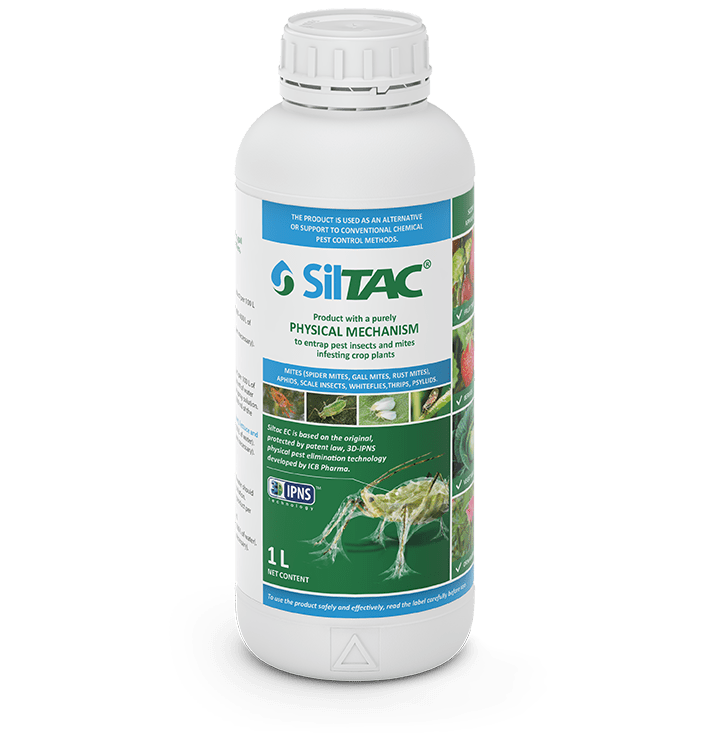Note: before applying pest control treatment, please read and strictly observe the notes and precautions regarding the use of Siltac!
How does Siltac work?
Siltac is an innovative solution designed to provide an effective method of controlling herbivorous insects and mites that feed on crop plants. The product does not contain traditional active substances of chemical pesticides, therefore it does not require a pre-harvest interval. This makes plant protection much safer.
The mechanism of action the product against insects and mites is typically physical and is based on the unique 3D-IPNS ™ technology (Three-dimensional Immobilizing Polymeric Net Structure).
3D-IPNS™
